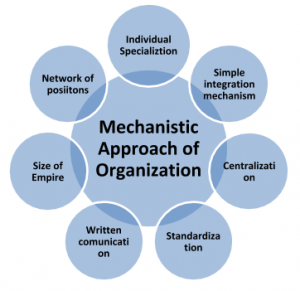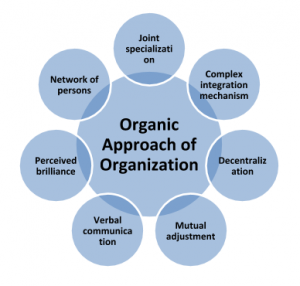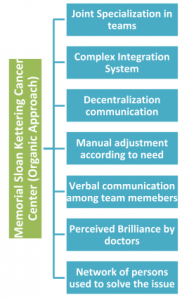Memorial Sloan Kettering Cancer Center Case Study Solution
Decision Making
The decision making procedure adopted by the Memorial Sloan Kettering Cancer Center is the decentralization process in which the authorities are assigned to the delegated teams who deal with the specific problem according to their specialization in that particular area. (Pelin Kanten, 2015). The decentralization strategy for decision making process enables the team to take decision according to their understanding of disease which they have achieved by continuously dealing and working on that particular disease.
Sensitivity of Environment
The sensitivity of environment adopted by the Memorial Sloan Kettering Cancer Center is open i.e. state of the art science and technology with latest research is adopted by the doctors in order to prevent, cure and eliminate the cancer (PC, 2012). Hence, the sensitivity of open environment enables the hospital to collaborate effectively with the doctors, physicians and researchers in the field of biomedical research who are investigating the cure of several type of cancers around the world.
Summary of Analysis
The analysis assists in determining the organizational approach i.e. organic approach adopted by the organization to conduct the overall process of the organization. Moreover, it is determined after the analysis that the task role allocated to the task force or teams are flexible i.e. members of specific team within their capacity are allowed to become the member of other task forces or teams which leads to the different roles conducted by the individuals in different teams. The flexibility of task role should be eliminated so that the member of specific team can focus on the curing a particular disease at once which is dealt by the whole team. Hence, in order to focus on specific disease to cure and eliminate, the focus of the team members should not be diverted through diversification of team members in various categories of teams, dealing with different natures of cancer disease. Hence, the new strategy of making the task role rigid will enable the organization to achieve its goal more efficiently to cure the disease by letting the team members focus only on the specific disease rather than working in different teams and handling various kinds of cancer disease. The flexibility in task role will impair the ability of the team member in dealing with the disease. Hence, the proposed changes to the role of task to make it rigid can be assessed in the following 6 to 12 months by determining the efficiency of doctors in preventing, curing and eliminating the cancer disease from the body of patients. The key performance indicators assist in measuring the quality and efficiency of treatment in curing the disease. Hence, the key performance indicator to assess the quality of curing the disease includes rate of success in curing the disease, performance of the team, advancement in research and analysis, information management, and the use of drugs which are effective in eliminating the cancer. The measurement of these key performance indicators will assist the organization in determining the effect of change in task roles within the time period of 6 to 12 months.
Appendices
Exhibit 1
Exhibit 2
Exhibit 3
Rating of Characteristic on a Scale of 1 to 10
| Characteristics | Scale | Rating |
| Organic Structure | 1-10 | 8 |
| Task Role | 1-10 | 6 |
| Communication | 1-10 | 7 |
| Decision Making | 1-10 | 7 |
| Sensitivity of Environment | 1-10 | 8 |
Exhibit 4
Memorial Sloan Kettering Cancer Center















